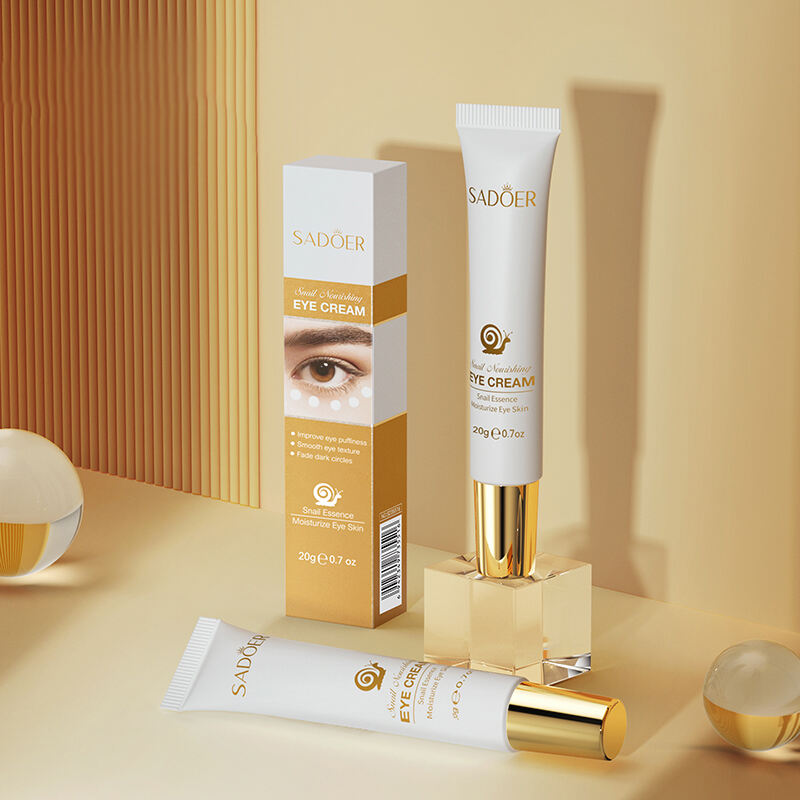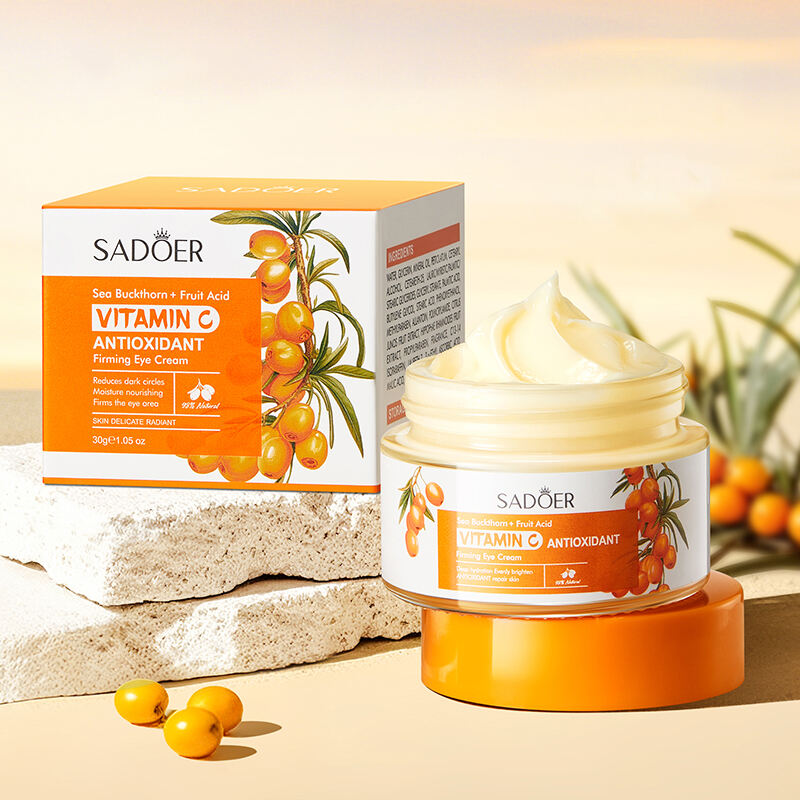Understanding the Delicate Eye Area and Its Unique Needs
The skin around our eyes tells a fascinating story - it's approximately 40% thinner than the rest of our facial skin and contains minimal oil glands, making it especially vulnerable to signs of aging and environmental stress. This delicate area is often the first to show fatigue, stress, and the passage of time through fine lines, dark circles, and puffiness. That's precisely why eye cream has emerged as an essential weapon in the battle against premature aging.
When we consider that the average person blinks around 10,000 times per day, it's no wonder this constantly moving area requires specialized care. Regular facial moisturizers simply aren't formulated to address the unique challenges of the eye area, which is why incorporating a targeted eye cream into your skincare routine can make a remarkable difference in maintaining a youthful appearance.
The Science Behind Effective Eye Creams
Key Active Ingredients That Power Results
Modern eye cream formulations are sophisticated cocktails of active ingredients specifically chosen for their ability to address eye area concerns. Peptides work to stimulate collagen production, while hyaluronic acid provides deep hydration and plumping effects. Antioxidants such as vitamins C and E protect against environmental damage, and ingredients like caffeine help reduce puffiness by constricting blood vessels.
Advanced eye cream formulations also often include niacinamide for brightening, retinol derivatives for gentle cell turnover, and specialized proteins that help strengthen the delicate skin barrier. These ingredients work synergistically to provide both immediate and long-term benefits for the eye area.
Delivery Systems and Absorption Technology
The effectiveness of an eye cream isn't just about its ingredients - it's also about how those ingredients are delivered to the skin. Contemporary eye creams utilize advanced delivery systems such as liposomes and microspheres that ensure active ingredients penetrate to the appropriate skin depth rather than sitting on the surface.
These sophisticated delivery mechanisms allow for time-released benefits throughout the day or night, maximizing the product's effectiveness while minimizing any potential irritation to this sensitive area. The best eye creams are also formulated with molecular sizes that can effectively penetrate the unique structure of the eye area's skin.

Strategic Application Techniques for Maximum Benefits
Proper Application Methods
The way you apply eye cream can significantly impact its effectiveness. Using your ring finger, which naturally applies the least pressure, gently pat the product around the orbital bone, working from the inner corner outward. This gentle patting motion helps prevent dragging of the delicate skin while promoting absorption and lymphatic drainage.
Many people make the mistake of applying too much product, but when it comes to eye cream, less is more. A pea-sized amount is typically sufficient for both eyes, and applying more won't increase the benefits - it may actually lead to product buildup or milia formation.
Timing and Frequency Considerations
The best time to apply eye cream depends on its specific formulation and your skin's needs. Morning applications should focus on lightweight formulas that play well under makeup and provide protection against environmental stressors. Evening applications can feature richer formulas that focus on repair and regeneration while you sleep.
Consistency is key - using eye cream twice daily ensures your skin receives continuous care and protection. It's important to apply eye cream as one of the first steps in your skincare routine, after cleansing but before heavier products that might prevent proper absorption.
Advanced Eye Care Strategies
Complementary Skincare Practices
While eye cream forms the foundation of eye area care, incorporating complementary practices can enhance its benefits. Using a dedicated eye mask once or twice weekly can provide intensive treatment, while gentle facial massage techniques can help improve circulation and reduce fluid retention.
Protecting the eye area from sun damage is crucial, so wearing sunglasses and using SPF-containing eye creams during the day is essential. Additionally, staying well-hydrated and getting adequate sleep supports the effectiveness of your eye cream routine.
Lifestyle Factors That Impact Eye Area Health
The effectiveness of your eye cream can be maximized or minimized by various lifestyle factors. Digital eye strain from excessive screen time can contribute to premature aging around the eyes, making regular screen breaks and proper positioning essential. A diet rich in antioxidants and omega-3 fatty acids supports skin health from within.
Managing stress levels, maintaining good sleep hygiene, and staying hydrated all play crucial roles in maintaining the health and appearance of the eye area. These lifestyle factors work in tandem with your eye cream to provide optimal results.
Investment in Long-Term Eye Health
Preventative Care and Early Intervention
Starting an eye cream routine early is one of the most effective strategies for maintaining youthful-looking eyes throughout life. Prevention is always easier than correction, and consistent use of eye cream from your mid-20s can significantly delay the onset of visible aging signs.
Regular use of eye cream helps maintain skin elasticity and hydration levels, making it more resilient to environmental stressors and the natural aging process. This preventative approach is far more effective than waiting until visible signs of aging appear to begin treatment.
Adapting Your Eye Care Routine Over Time
As skin needs change with age and environmental factors, your eye care routine should evolve accordingly. What works in your 20s may need adjustment in your 30s and 40s. Regular assessment of your eye area's needs and adjusting your eye cream choice accordingly ensures continued effectiveness.
Consider seasonal changes as well - lighter formulations might work better in humid summer months, while richer creams provide needed protection during dry winter periods. Being responsive to your skin's changing needs maximizes the benefits of your eye cream investment.
Frequently Asked Questions About Eye Cream
When Should I Start Using Eye Cream?
The ideal time to start using eye cream is in your mid-20s, when collagen production naturally begins to slow down. However, it's never too early to start if you're concerned about preventing premature aging, and it's never too late to begin experiencing the benefits of regular eye cream use.
Can I Use Regular Moisturizer Instead of Eye Cream?
While facial moisturizers provide hydration, they aren't formulated for the unique needs of the eye area. Eye creams contain specific ingredients at concentrations appropriate for this delicate skin, and they undergo additional safety testing to ensure they won't irritate the eyes.
How Long Does It Take to See Results from Eye Cream?
Initial benefits like improved hydration and temporary reduction in puffiness can be seen within days. However, more significant results such as reduction in fine lines and long-term improvements in skin texture typically become visible after 8-12 weeks of consistent use.

